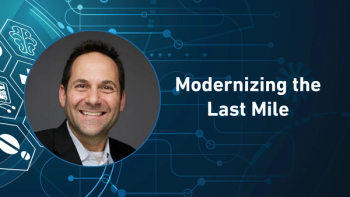
- Pharmaceutical Commerce - May/June 2016
ZS Associates sharpens focus on pharma-physician interaction
'Customer Experience Tracker' measures success in oncologist interactions
By mashing up data from two existing ZS services, AffinityMonitor and AccessMonitor, and using claims data for several hundred oncologist and oncology HCPs (from Symphony Health Solutions), ZS Associates (Evanston, IL) has published its first Customer Experience Tracker, an analysis that provides a comprehensive view of how multichannel marketing—including sales rep interactions, which ZS is known for—can affect overall success in marketing oncology products. Jon Roffman, managing principal, tells Pharmaceutical Commerce that while this is the first such Tracker, the company is planning how to roll out the analysis to other therapy areas, and how to update the analysis over time.
Of 20 oncology companies represented in the survey, only four had what ZS brands as a positive Net Promoter Score (somewhat snarkily, ZS also polled oncologists on the NPS of consumer brands—Amazon represents the highest NPS, Walmart the lowest, and Southwest Air exactly in the middle). If they were able to improve their NPS to the benchmark of +10%,” ZS says, the large number of companies with an NPS around -20% could drive $75 million in incremental sales for every $1 billion in current sales. Magnified across the range of oncology products and companies, there’s an estimated $5-billion opportunity in improved marketing performance.
Rep access, reputation
Oncologists are traditionally the hardest HCPs to connect with, as per previous ZS AffinityMonitor studies that showed that only 27% of them are “accessible” to reps, as ZS defines it. The better oncology marketers have reps that provide great customer service, are available and knowledgeable about therapies, can interact well with other HCPs (nurses and administrators), and keep a focus on meeting patient needs. But, as Roffman notes, reps are not the sole link between the oncology company and the oncologist. The better companies have a coordinated customer experience across channels (email, web, etc.) and have organizational structures that are unified around the message. “An oncologist who is visited by a rep the day after a rep from the same company showed up, or by a rep unaware of the online interactions that oncologist has recently engaged, creates a negative customer experience,” he notes. The unified customer expierence is part of the “orchestrated” interaction that ZS recommends to its pharma clients.
One survey result sure to raise the eyebrows of some oncologists is that only 36% of the customer experience rating is attributable to oncology products themselves; the other two-thirds are rep performance, patient services, online engagement and company reputation. “Manufacturers traditionally have focused on the characteristics of their products in their marketing plans,” says Roffman; product characteristics are more or less set, but marketers have greater flexibility in improving the “people oriented” aspects of the customer experience.
The study is available from ZS
Articles in this issue
over 9 years ago
FDA looks to industry for help in DSCSA complianceover 9 years ago
Clinical cold chain vendors go into a deep freezeover 9 years ago
Oncology: a new era in therapies; same cost concernsover 9 years ago
Brand enhancement and safety with unit-dose packagingover 9 years ago
Managing supply chains from the cloudover 9 years ago
Changing the payment paradigmover 9 years ago
Specialty pharmacy dynamicsNewsletter
Stay ahead in the life sciences industry with Pharmaceutical Commerce, the latest news, trends, and strategies in drug distribution, commercialization, and market access.




